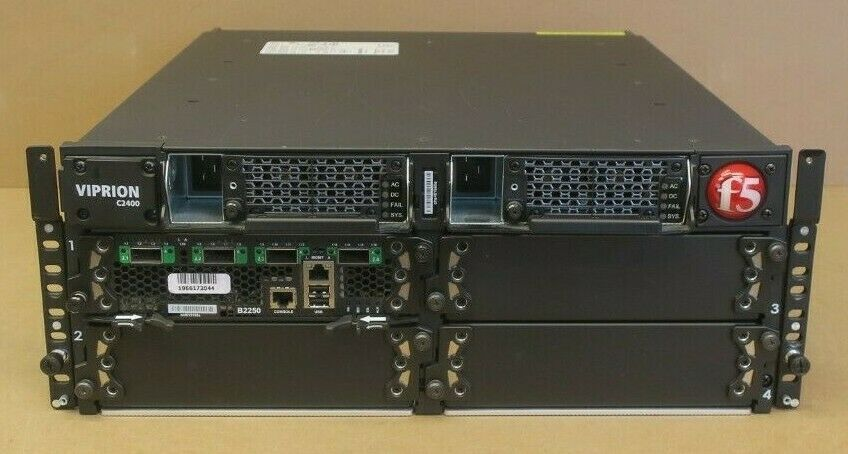The reputable F5 company is an American multinational company. The company specializes in technology (ADN) that optimizes the delivery of network-based applications and provides security. Among the features of this company's products, we can mention good performance along with unparalleled availability and security. F5 is headquartered in Seattle, and was founded in 1996.
At the same time as expanding its activities, this company opened its sales offices all over the world. It should be mentioned that the first equipment that F5 company produced was LoadBalancer for computer networks. In 2010 and 2011, this company was among the top 100 companies that have been able to grow rapidly in the field of information and communication technology and security.

F5 company has included various equipment in its product portfolio. including products to control the delivery of ADC software and cloud processing. F5 license has been able to implement security in different layers by means of extremely efficient modules.
In the first year of its establishment, F5 Company released its LoadBalancer under the title of BIG-IP. After the F5 company went public in 1999, this product was able to attract many customers in the stock exchange.
According to the prediction of most research institutes in the field of Internet and electronic equipment, more than 25 billion devices will be connected to the Internet by 2022. Along with this increase in the number of devices connected to the Internet, the service infrastructure must also respond to this huge amount of requests. Although, due to the use of HTTP/2 technology, each user uses a smaller number of connections, however, a very significant increase in Front End connections is certain. In order to respond to this volume of requests, the application architecture has also moved from an integrated and single state to a set of several connected services. In this way, the amount of load caused by user traffic is distributed among several servers and the necessary capacities are created.
As a leader in the field of ADC technology, F5 offers a set of valuable capabilities in the field of ADC based on the F5 BIG-IP product and F5 License. The F5 is mostly known for its Load Balancer or Local Traffic Manager (LTM) product. But the extensive capabilities of this company's products are not limited to LTM and all kinds of software application modules of this company can be licensed on its platform.
The F5 BIG-IP system has many components, and the integration of these components in the form of a platform is one of its most important features.
F5 Appliances key features
Lowest TCO
F5 licensed products reduce TCO as well as required infrastructure by consolidating security and application services in the form of a platform.
Protection of sensitive data
Providing the high level of capacity required by SSL to protect sensitive data by outsourcing the processing of elliptical curve cryptography (ECC) to scalable hardware with Forward Secrecy (FC) capability.
Application security
F5 license products provide the most effective protection solution including protection against DDoS, Full Stack protection (L3-L7) including Firewall approved by ICSA.
Very high flexibility in implementation
Ability to implement in various environments including Cloud and Container
Maximum investment protection
The software-defined capabilities of the iSeries products include the unique F5 TurboFlex™ FPGA technology that enables us to optimize the device's performance on-demand to perform a specific task such as dealing with DDoS and processing UDP traffic. Taking advantage of such software upgrade capabilities makes it unnecessary to upgrade hardware and spend exorbitant costs.
The highest level of Uptime
F5 licensed products guaranteeing the implementation of your services on a completely reliable and carrier-grade hardware platform that has hot-swap components.

Programmable performance profiles
When the software and CPU did not meet the performance needs, the technology of using special ASIC chips became common. ASICs provide a special feature with the highest possible speed on the hardware. But the biggest limitation of ASICs is that they are only designed to do a specific task, and if a function is needed that is not already designed on the ASIC, these chips face limitations.
At this time, once again, the application must perform its software tasks through the CPU. If we consider the CPU to be slow, flexible and have multiple capabilities, and consider the ASIC to be inflexible but very fast, the third technology is in the middle: Field-Programmable Gate Array (FPGA). An FPGA is slower than ASIC and much faster than CPU and can be programmed to perform various tasks.
F5 licensed products
F5 products, technologies, and security solutions work together to ensure applications are running the right way. Unlike traditional firewalls, BIG-IP Advanced Firewall Manager is designed based on the full-proxy architecture of the TMOS F5 operating system. This technology helps network administrators closely monitor common protocols including HTTP/S, DNS, ICMP, and TCP.
While normal firewalls are used when the user wants to connect to an unknown server through the Internet. F5 firewalls are used on the server side to ensure network security when anonymous users connect. BIG-IP iSeries devices have high efficiency, control and flexibility and have many models that are selected by security experts considering different factors.
In general, F5 firewalls are classified into two groups: BIG-IP SYSTEM and VIPRION.
F5 BIG-IP SYSTEM
F5's next-generation ADC platform is cloud-compatible and provides the scalability and security required for current and emerging applications. The new F5 BIG-IP iSeries appliances benefit from fast, easy programming and synchronization compatible with the ecosystem and unparalleled hardware speed. So customers can increase the speed of their private clouds and secure their critical data at scale, while reducing TCO (total cost of ownership) and future-proofing their application infrastructure.
BIG-IP i2000 Series
- Up to 650K connections per second for Layer 7 communications
- Up to 250K connections per second for Layer 4 communications
- 1M HTTP requests per second
- 10 Gbps throughput
- The possibility of using TubroFlex layer 1
- 5Gbps hardware compression for i2800
- 3Gbps software compression for i2600
- At least 5Gbps for SSL Offload
- Lack of FIPS support
- No support for DDOS Protection
BIG-IP i4000 Series
- Up to 1.1M connections per second for Layer 7 communications
- Up to 450K connections per second for Layer 4 communications
- Maximum 2M HTTP requests per second
- 20 Gbps throughput
- The possibility of using TubroFlex layer 2
- 10Gbps hardware compression for i4800
- 6Gbps software compression for i4600
- At least 10Gbps for SSL Offload
- FIPS support
- No support for DDOS Protection
BIG-IP i5000 Series
- Up to 1.8M connections per second for Layer 7 communications
- Up to 800K connections per second for Layer 4 communications
- Maximum 12M HTTP requests per second
- 60 Gbps throughput
- The possibility of using TubroFlex layer 3
- 10Gbps hardware compression for i5800
- 12Gbps software compression for i5600
- Minimum 15Gbps for SSL Offload
- FIPS support
- Support DDOS Protection

F5 VIPRION
With the expansion of the application distribution network (ADN) and as a result of trying to meet these growing needs, operational costs and complexities also increase, and organizations cannot respond to new needs and opportunities at a high speed. The F5 VIPRION platform is a professional application distribution controller (ADC) that can change its performance by adding or removing expansion modules without disturbing users or the application. Instead of adding devices and partitioning applications, you only need to add the power you need to the infrastructure. VIPRION gives you the scalability you need to create a sustainable ADN strategy.
Key benefits of F5 VIPRION firewall
- reduction in costs
- Integration of devices
- Network simplification
- Best possible performance
- Achieving maximum reliability
- Increased intelligence without increasing operating costs
- Increasing application and firewall performance on large scales
 icons at the top right corner of the subsection.
icons at the top right corner of the subsection.